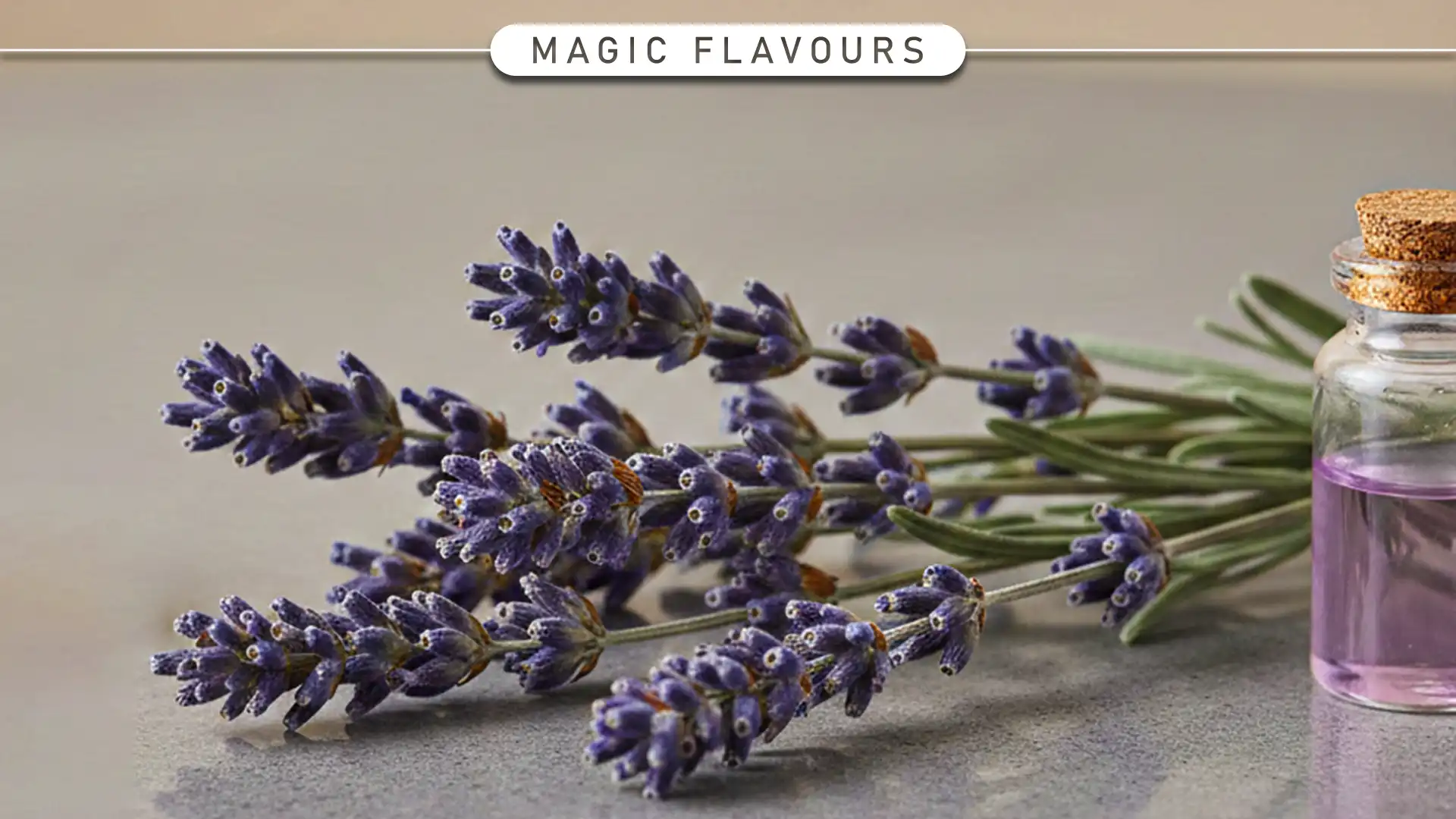1. Lavender Flavor: A Floral Classic Reinvented for Modern Tastes
From herbal tradition to cutting-edge applications, Lavender Flavor in food, beverages, and shisha.

So, lavender flavor has traveled a long journey from ancient use to modern innovation.
And people have always linked lavender with calm, comfort, and balance.
Moreover, today’s consumers are eager to rediscover that floral identity in new products.
Therefore, lavender is now appearing in premium teas, artisanal chocolates, and signature cocktails.
Also, brands see lavender as both nostalgic and forward-looking in its appeal.
But it requires skillful development to keep the taste refined and approachable.
So modern chefs and flavor houses explore lavender in creative and subtle ways.
And beverage makers use lavender to enhance refreshing lemonades, tonics, and zero-proof cocktails.
Moreover, bakeries infuse it into cookies, pastries, and cakes for a unique twist.
Therefore, shisha brands also adopt lavender to bring calm and aromatic depth.
Also, consumers connect lavender with relaxation, wellness, and a premium lifestyle.
But balancing intensity remains key to making lavender widely appreciated today.
2. What Does Lavender Flavor Really Taste Like?
Exploring the floral, citrusy, and honey-like notes behind this timeless flavor.
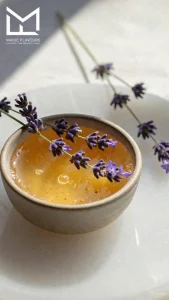
So, lavender offers a flavor that is both floral and gently herbal.
And its sweetness reminds people of honey with soft balsamic undertones.
Moreover, many describe hints of citrus that brighten the overall profile.
Therefore, lavender feels light yet complex on the tongue.
Also, the flavor balances sweetness with a clean herbal freshness.
But if used too heavily, lavender can taste perfumery or soapy.
So, the main taste molecules are linalool and linalyl acetate.
And these compounds give lavender its calming citrus-floral character.
Moreover, they create the signature balance between sweetness and freshness.
Therefore, when lavender is paired with fruits, it becomes more rounded.
Also, honey and vanilla can soften its herbal edges.
But skillful blending ensures the taste remains elegant and enjoyable.
3. Not All Lavender Flavors Is Created Equal
Why Lavandula angustifolia is the gold standard for edible use—and how lavandin differs.
So, not every lavender variety delivers the same taste experience.
And Lavandula angustifolia, often called English lavender, is prized for culinary use.
Moreover, it offers a sweet, clean, and balanced floral profile.
Therefore, chefs and flavorists prefer it when designing edible creations.
Also, its low camphor content keeps the taste gentle and pleasant.
But other lavender types can lean sharp, bitter, or even medicinal.
So. lavandin, a hybrid of lavender species, grows in larger quantities.
And while it provides higher oil yield, it has more camphor.
Moreover, this makes the flavor stronger but often less refined.
Therefore, lavandin is used more in perfumes than in foods.
Also, it may appear in flavors when bold notes are desired.
But for edible applications, angustifolia remains the gold standard worldwide.
4. Lavender Flavor: From Ancient Fields to Global Menus
A look at lavender’s journey from medicine and perfumery to food and beverage innovation.
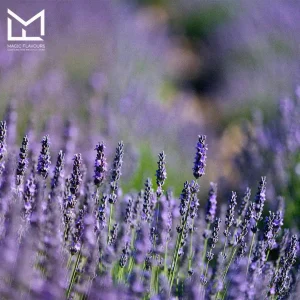
Lavender has been valued since ancient times for its healing qualities.
And Egyptians used it in oils, perfumes, and spiritual rituals.
Moreover, Romans introduced lavender into baths and early culinary preparations.
Therefore, the plant gained a reputation for calm and wellness.
Also, throughout history, lavender symbolized purity and relaxation in many cultures.
But only recently has it become a modern culinary star.
So, today lavender moves from apothecaries to coffee shops and cocktail bars.
And chefs highlight it in desserts, sauces, and baked goods.
Moreover, beverage makers craft lavender lattes, spritzers, and botanical cocktails.
Therefore, consumers now associate lavender with both wellness and indulgence.
Also, its use in shisha shows its reach into lifestyle products.
But its journey proves lavender can bridge tradition and modern taste.
5. Why Lavender Flavor Is Rising in Popularity
The consumer shift toward botanicals, relaxation, and premium floral experiences.
Consumers today seek flavors that feel natural and soothing.
And lavender answers this demand with its calm, floral profile.
Moreover, health-conscious buyers associate botanicals with wellness and balance.
Therefore, lavender appears in teas, cocktails, and functional beverages.
Also, the rise of premium coffee culture supports floral infusions.
But lavender stands out because it feels both trendy and timeless.
brands use lavender to signal elegance and sophistication.
And its versatility allows it to fit sweet, citrus, and herbal blends.
Moreover, younger audiences see lavender as a modern lifestyle flavor.
Therefore, it thrives in bakery, desserts, and beverage innovations.
Also, shisha blends adopt lavender for a relaxing twist.
But the growing demand proves lavender has moved into the mainstream.
6. What Works Best with Lavender Flavor?
How citrus, honey, berries, herbs, and vanilla elevate lavender’s natural profile.

Lavender pairs beautifully with bright citrus fruits like lemon and grapefruit.
And the sharpness of citrus balances lavender’s sweet floral notes.
Moreover, honey enhances lavender by adding warmth and smoothness.
Therefore, this pairing creates a comforting and indulgent flavor combination.
Also, vanilla works well to soften lavender’s herbal edges.
But without balance, lavender can dominate and taste too perfumey.
berries add juicy depth that complements lavender’s gentle sweetness.
And blueberries, strawberries, and blackberries create fresh, fruity complexity.
Moreover, herbs like mint and rosemary add a green freshness.
Therefore, these herbal blends give lavender a more modern character.
Also, in mixology, these pairings create unique premium beverages.
But thoughtful blending ensures lavender always stays refined and enjoyable.
7. Ways to Use Lavender in Flavor Development
From dried buds and syrups to essential oils and hydrosols.
Dried lavender buds are a classic way to infuse flavor in foods.
And they work well in syrups, sugars, and baked goods.
Moreover, dried buds provide a natural aroma and gentle floral taste.
Therefore, they are ideal for desserts and beverages that need subtlety.
Also, chefs often strain buds to avoid a soapy texture.
But careful measurement is key to prevent overpowering the dish.
So, essential oils offer a concentrated way to add lavender flavor.
And they allow consistent, standardized flavor across batches.
Moreover, hydrosols or distilled waters give a mild, water-compatible option.
Therefore, they are perfect for drinks, light desserts, and dairy products.
Also, syrups and purees create ready-to-use flavors for bars or bakeries.
But selecting food-grade materials ensures safety and authentic taste.
8. Lavender Flavor in Food and Beverages
Trending uses in bakery, confectionery, cocktails, and coffee creations.
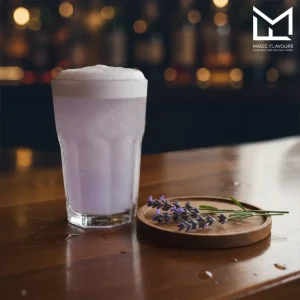
Lavender adds a unique twist to bakery items like cookies and cakes.
And it pairs beautifully with lemon, honey, or white chocolate.
Moreover, its floral notes enhance pastries, tarts, and shortbreads.
Therefore, bakeries use lavender to create signature desserts that stand out.
Also, it adds a premium, artisanal touch that appeals to customers.
But using too much can make desserts taste perfumey or bitter.
So, in beverages, lavender is popular in cocktails, teas, and lattes.
And mixologists combine it with citrus, berries, or herbs for balance.
Moreover, coffee shops infuse syrups or sprinkle dried buds for flavor.
Therefore, floral notes enhance both alcoholic and non-alcoholic drinks.
Also, the trend aligns with wellness and botanical-inspired beverage culture.
But precise measurements are crucial to maintain a smooth, refined taste.
9. Lavender Flavor in Hookah Flavor Design
How floral notes add calm, balance, and sophistication in shisha blends.
Lavender brings a relaxing, aromatic element to hookah blends.
And it pairs well with mint, honey, citrus, and subtle fruits.
Moreover, its floral notes soften strong or sweet tobacco flavors.
Therefore, it creates a calm and balanced smoking experience.
Also, lavender adds sophistication, appealing to premium shisha users.
But overuse can make the blend taste perfumey or artificial.
So, flavor designers often use lavender as a secondary, supporting note.
And it enhances fruity or herbal mixes without dominating the profile.
Moreover, combinations with mint or berries are especially popular in lounges.
Therefore, it allows creative customization for niche and premium markets.
Also, subtle lavender highlights can improve aroma, taste, and overall enjoyment.
But careful proportioning is essential for a refined and pleasant result.
10. Choosing the Right Lavender for Flavor
Terroir, species, and standardization for consistency and authenticity.

The source of lavender greatly affects its flavor profile.
And high-altitude regions often produce sweeter, cleaner floral notes.
Moreover, English lavender (Lavandula angustifolia) is preferred for edible uses.
Therefore, selecting the right species ensures a refined, balanced taste.
Also, terroir influences aroma, sweetness, and subtle herbal characteristics.
But lavandin varieties can be sharper and more camphor-forward, requiring caution.
So, standardization helps maintain flavor consistency across batches.
And using oils with a known linalool/linalyl acetate ratio ensures predictable results.
Moreover, testing each lot for flavor quality prevents unpleasant surprises.
Therefore, suppliers and flavor houses often combine sourcing with quality control.
Also, careful selection supports both culinary and beverage applications.
But balancing authenticity with stability is key to creating reliable flavors.
11. Crafting Lavender Flavors That Work
Overcoming challenges like soapiness, bitterness, and camphor notes.
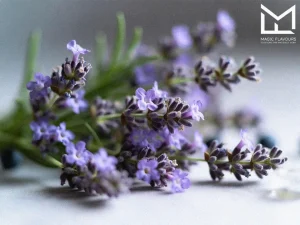
Crafting lavender flavor requires careful balance and expertise.
And using too much can create a soapy or perfumey taste.
Moreover, certain lavender varieties contain higher camphor, which adds bitterness.
Therefore, flavorists often blend it with citrus, honey, or vanilla to soften edges.
Also, testing small batches ensures a refined, pleasant flavor profile.
But ignoring botanical selection can lead to harsh or artificial results.
So, precision is key when combining lavender with other ingredients.
And floral notes work best as a supporting, not dominant, flavor.
Moreover, hydration, temperature, and infusion time impact taste extraction.
Therefore, careful technique prevents bitterness and enhances natural sweetness.
Also, iterative testing helps create a consistent and enjoyable final product.
But attention to detail ensures that lavender remains elegant and widely appealing.
12. The Future of Lavender Flavor
A versatile botanical poised to stay at the intersection of tradition and innovation.

Lavender continues to inspire chefs, mixologists, and flavor houses worldwide.
And its versatility allows use in desserts, beverages, and shisha blends.
Moreover, consumers increasingly value botanical, natural, and calming flavors.
Therefore, lavender meets both tradition and modern lifestyle demands.
Also, innovation in extracts, oils, and syrups expands creative possibilities.
But balancing intensity and subtlety will remain essential for future success.
So, brands are exploring new pairings with fruits, herbs, and spices.
And functional beverages and wellness products embrace lavender’s relaxing profile.
Moreover, customization allows tailored flavors for regional tastes and premium experiences.
Therefore, lavender is expected to maintain relevance in culinary and lifestyle markets.
Also, ongoing experimentation ensures it evolves while retaining its classic charm.
But the key lies in careful formulation, quality sourcing, and creative application.
